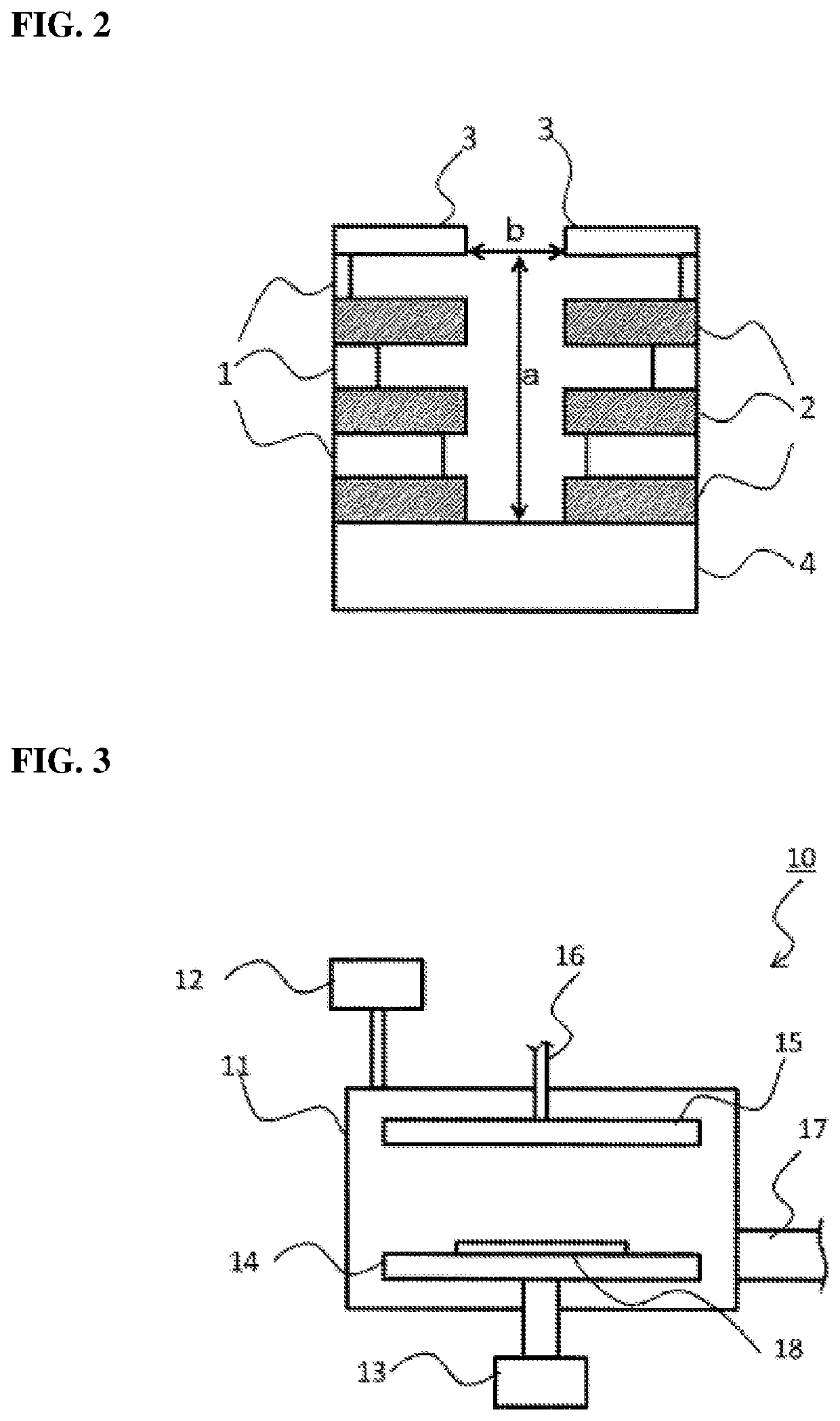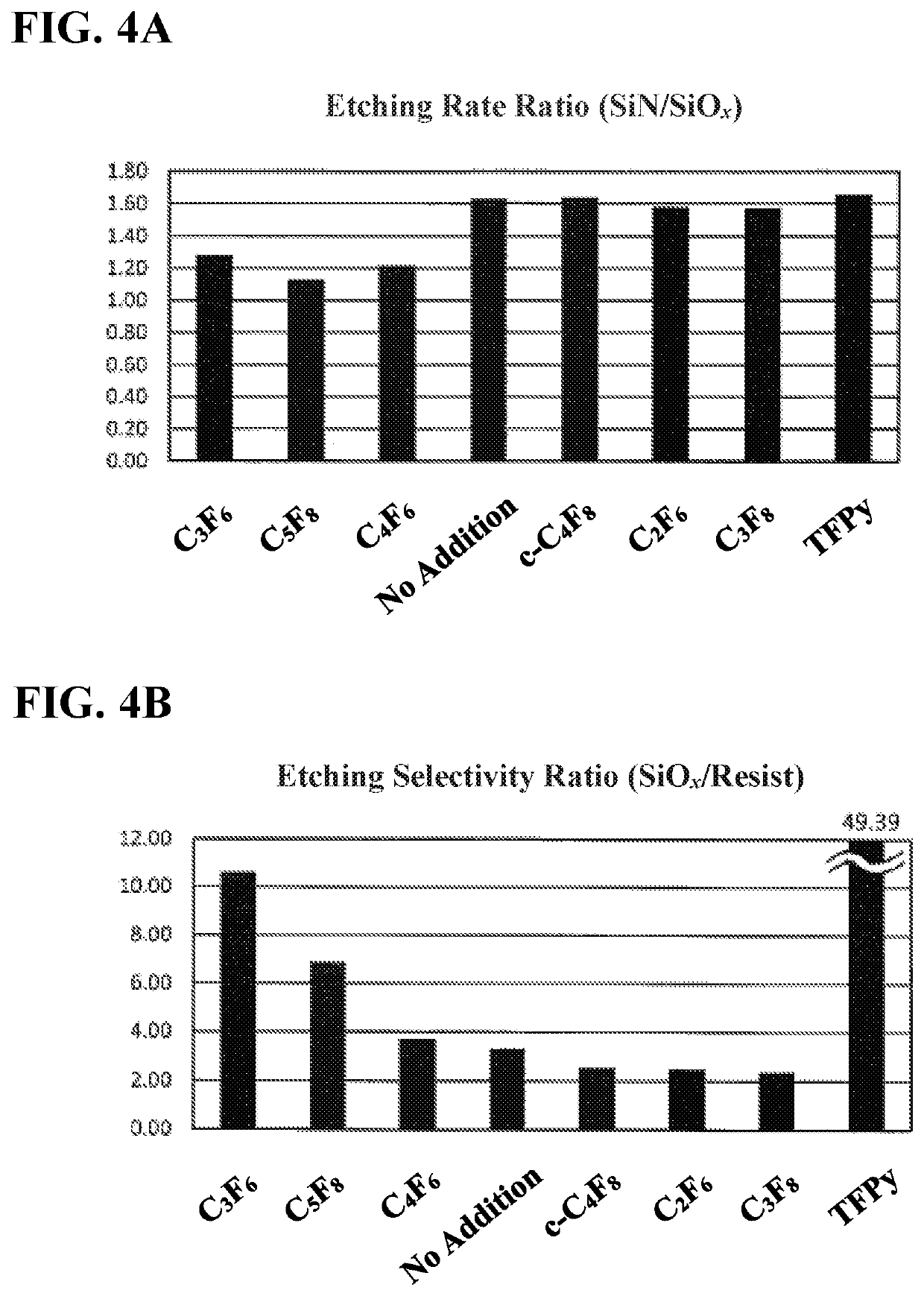Dry etching method
a technology of etching method and etching method, which is applied in the direction of plasma technique, chemistry apparatus and processes, electric discharge tubes, etc., can solve the problems of difficult to etch only the laminated film of p-si and siosub>x, damage to the substrate, and the approaching physical limits of fine processing, so as to suppress excessive isotropic etching and reduce the difficulty of etching. , the effect of preventing the collapse of the laminated structur
- Summary
- Abstract
- Description
- Claims
- Application Information
AI Technical Summary
Benefits of technology
Problems solved by technology
Method used
Image
Examples
example 1
[0059](Etching Operation)
[0060]FIG. 3 is a schematic view of a reaction apparatus 10 used in Examples and Comparative Examples. A lower electrode 14, an upper electrode 15 and a pressure gauge 12 are arranged in a chamber 11. Herein, the lower electrode 14 had the function of holding a sample 18 and thus also served as a stage. A gas introduction hole 16 was connected to an upper part of the chamber 11. Further, the chamber 11 was adapted to control its inside pressure and to excite a dry etching agent by means of a high-frequency power source (13.56 MHz) 13. Etching operation was performed by bringing the excited dry etching agent into contact with the sample 18 on the lower electrode 14. With the application of a high-frequency power from the high-frequency power source 13 in a state where the dry etching agent was introduced into the chamber, there was developed a direct-current voltage, called a bias voltage, between the upper electrode 15 and the lower electrode 14 due to a dif...
example 2
[0064]Etching operation was performed in the same manner as in Example 1, except that the etching agent was supplied by mixing C3H2F4 (HFO-1234ze(E)), C3F6 (hexafluoropropene), O2 and Ar at a ratio of 10 volume %, 3 volume %, 6 volume % and 81 volume % relative to the total flow rate.
example 3
[0065]Etching operation was performed in the same manner as in Example 1, except that the etching agent was supplied by mixing C3H2F4(HFO-1234ze(E)), C3F6, O2 and Ar at a ratio of 10 volume %, 5 volume %, 6 volume % and 79 volume % relative to the total flow rate.
PUM
| Property | Measurement | Unit |
|---|---|---|
| aspect ratio | aaaaa | aaaaa |
| bias voltage | aaaaa | aaaaa |
| aspect ratio | aaaaa | aaaaa |
Abstract
Description
Claims
Application Information
 Login to View More
Login to View More - R&D
- Intellectual Property
- Life Sciences
- Materials
- Tech Scout
- Unparalleled Data Quality
- Higher Quality Content
- 60% Fewer Hallucinations
Browse by: Latest US Patents, China's latest patents, Technical Efficacy Thesaurus, Application Domain, Technology Topic, Popular Technical Reports.
© 2025 PatSnap. All rights reserved.Legal|Privacy policy|Modern Slavery Act Transparency Statement|Sitemap|About US| Contact US: help@patsnap.com



